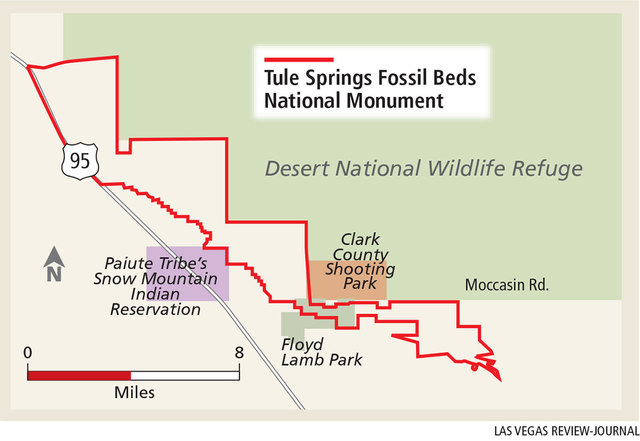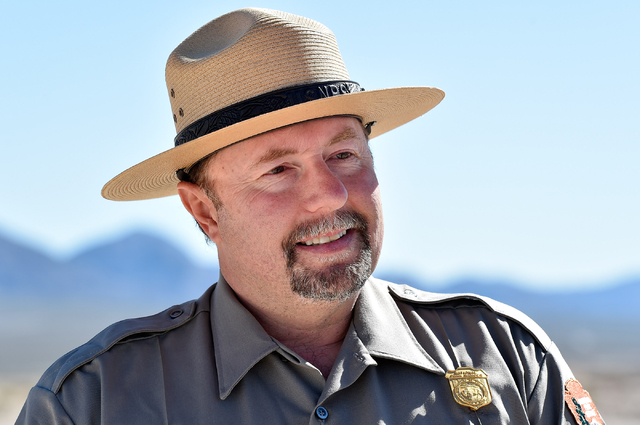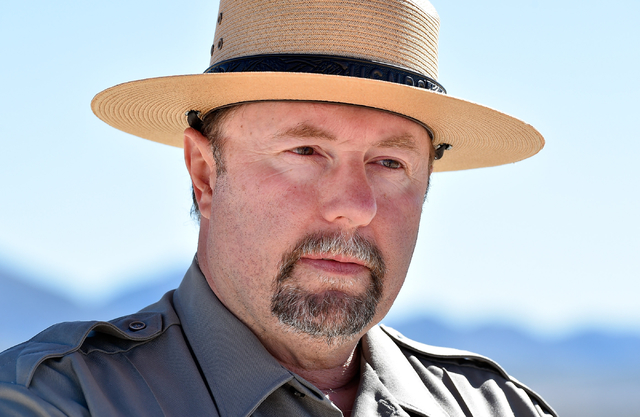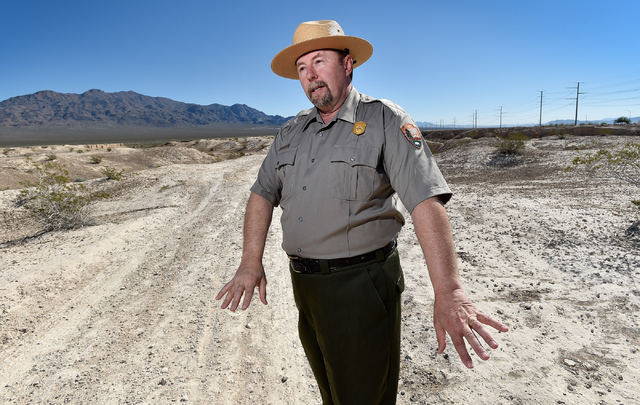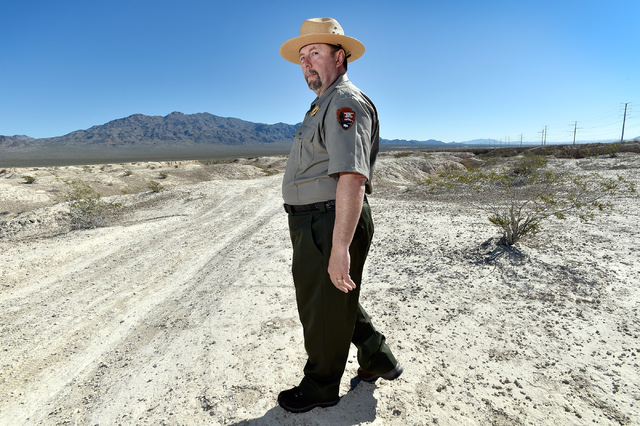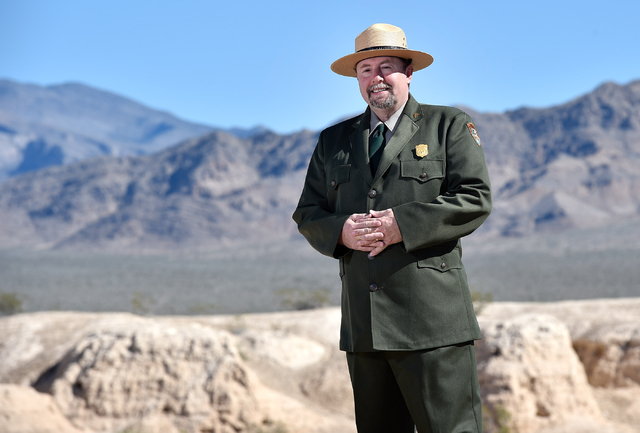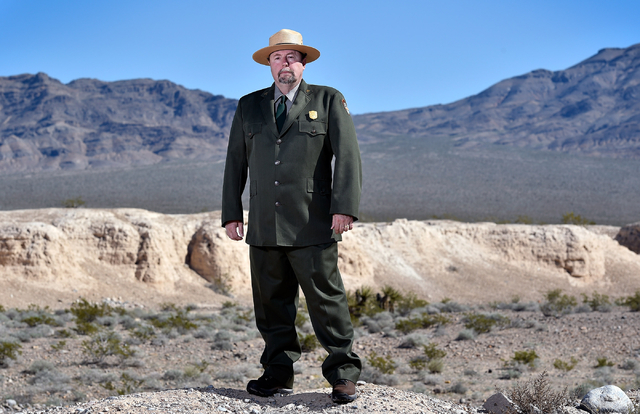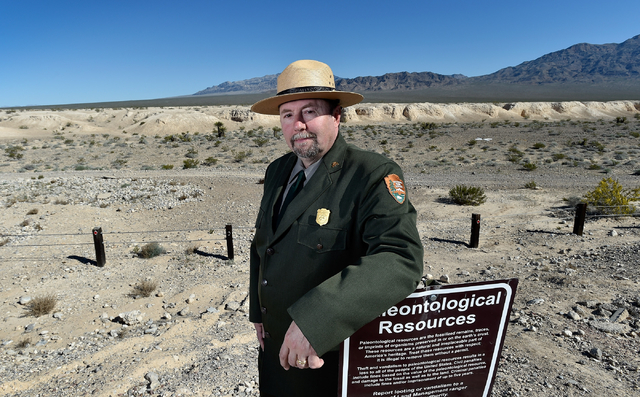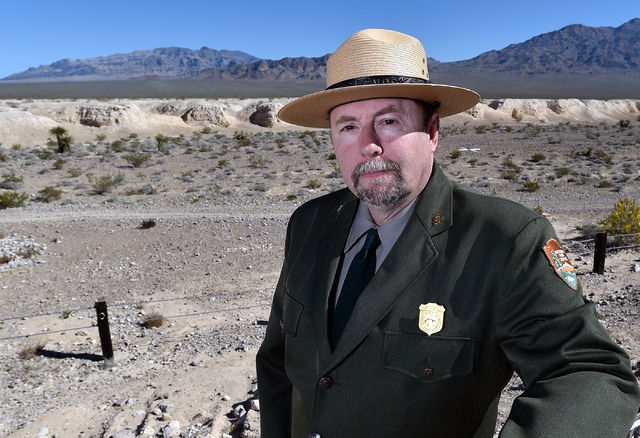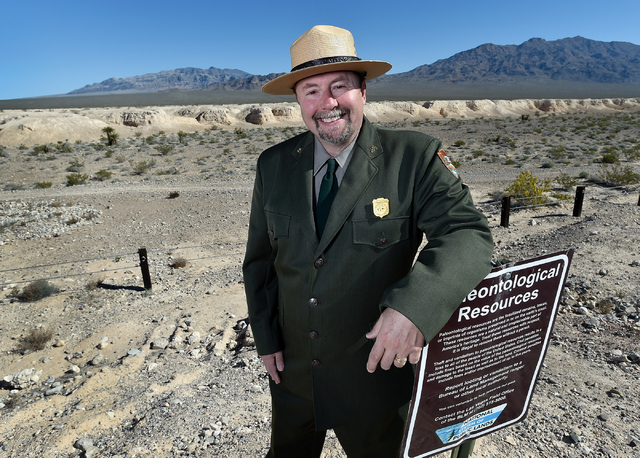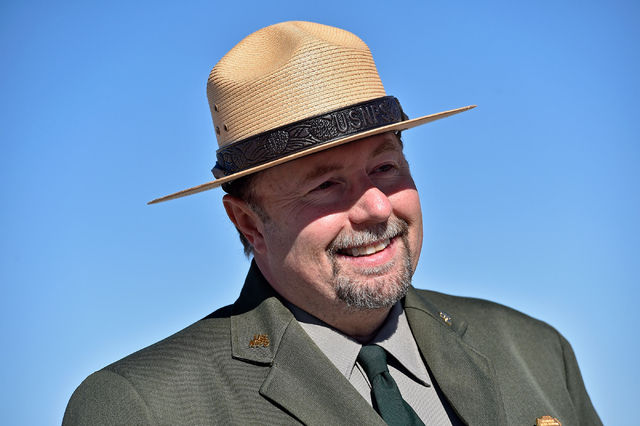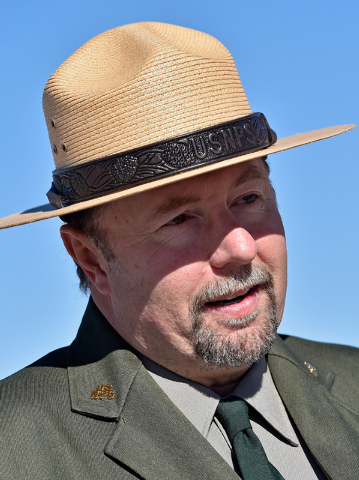National Park Service sends top fossil expert to launch new monument
Tule Springs Fossil Beds National Monument, at the northern edge of the Las Vegas Valley, is considered one of the richest and most wide-ranging collections of ice age bones on Earth, so the National Park Service sent its top man.
The new monument’s first superintendent is Vincent Santucci, senior geologist and paleontologist for the Park Service. He just wrapped up his first week on the job.
“It’s a very rare opportunity, very rare,” he said Friday from the edge of the 22,650-acre monument at the north end of Durango Drive. “To be the first superintendent is quite an honor.”
It won’t be a lasting one.
Santucci’s assignment is slated to last just 90 days, long enough, he hopes, to oversee the transfer of the property from the U.S. Bureau of Land Management to the Park Service and begin the yearslong process of “standing up” the new monument.
Someday, backers of the monument hope to see a visitor center, a network of trails and a robust paleontology program that will attract researchers, students and tourists interested in watching new scientific discoveries as they are made.
But first things first, Santucci said. “Right now, our first priority is to get the boundaries surveyed. That will affect a lot of things.”
Though the legislation that created the monument included a map and description of the area, its exact dimensions have yet to be formalized. Santucci said the process could take up to two years, depending on how complete existing maps prove to be.
It also could take several years to come up with a comprehensive management plan for the monument. The plan will be developed by the Park Service using recommendations from an advisory board Santucci hopes to assemble while he’s here and possibly serve on after he’s gone.
He warned that progress at Tule Springs could be slowed somewhat by the Park Service’s centennial celebration, which begins next month and will sap the agency’s resources through its 100th birthday in 2016.
The National Park System already has sites dedicated to other geologic periods, but Tule Springs is the first specifically established to preserve ice age fossils. “This is a piece of the story we were missing,” Santucci said.
Jill DeStefano is president and one of the founding members of Protectors of Tule Springs, a volunteer group that has spent years fighting to keep the fossil beds from being trashed or covered by homes.
She said she’s thrilled by Santucci’s appointment, and she can’t wait to meet him — just as soon as his busy schedule allows.
“I think it’s great because the most valuable asset out there is the paleontology,” DeStefano said. “I know there’s a lot of getting up to speed to do, but one thing he won’t have to get up to speed on is the fossils.”
She hopes Santucci can be talked into extending his stay, but even if he’s only here for three months she said he could play a crucial role in overseeing the transfer of important records about Tule Springs from the BLM to the Park Service.
Those records and his expertise in interpreting them should help determine which sites require immediate attention and protection and “which sites we can share with the public,” DeStefano said.
In his spotless new hiking boots and stiff green uniform jacket, Santucci looked every bit like the new guy Friday. In truth, he’s been training for the job since he was a kid.
Santucci grew up in 1960s Pittsburgh, a few blocks from the Carnegie Museum of Natural History and Forbes Field, then the home of the Pirates. “I either wanted to be a paleontologist or a ball player,” he said.
He wound up studying geology at the University of Pittsburgh. Then he joined the Park Service, performing the field work for his master’s thesis while working as a ranger at Badlands National Park in South Dakota.
At the time, the park was having problems with collectors stealing protected fossils from federal land, so Santucci decided to get law enforcement certification. “It resulted in me becoming the government’s only pistol-packing paleontologist,” he said.
He went on to work at several other parks including Grand Canyon and Yellowstone before taking over as the Park Service’s senior geologist and paleontologist five years ago.
His first visit to Tule Springs came in 2011 during a national paleontology convention in Las Vegas. He said he was struck by the wealth of fossils and the wide span of geologic time preserved there — at least 100,000 years of climactic shifts that left their marks on the land for those who know where to look.
“This is a very significant site. There’s a whole geologic story here,” Santucci said.
Before his 90 days are up, he hopes to recruit some UNLV geology students as tour guides and get some visitors out to the monument. “We’re as anxious as anyone,” he said.
Other pressing tasks include assembling and printing informational brochures and setting up a website for Tule Springs.
The monument will host its first official event April 11: a volunteer cleanup Santucci said will be the first of many needed to haul away decades of trash left at impromptu shooting ranges and illegal dump sites.
“We’ve got some challenges. We’ve got some litter to clean up,” he said.
As for exactly how and when the area might open to wider public access and educational opportunities, that will be decided in consultation with the community and in consideration of “the privacy of individuals who live close to the site,” Santucci said, motioning to the rows of houses across the street from where Durango dead-ends at the monument boundary.
“Though this resource has been here for a very long time, the National Park Service became a new neighbor in December 2014,” he said. “We want to be a good neighbor.”
Contact Henry Brean at hbrean@reviewjournal.com or 702-383-0350. Find him on Twitter: @RefriedBrean.




